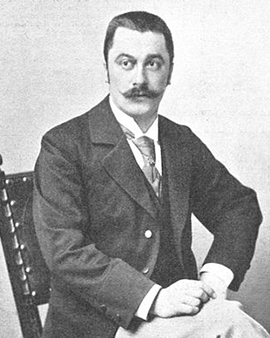The example of the painter Albin Egger-Lienz shows how the course of a person's life can influence artistic representation.
Born in East Tyrol, he devoted himself to painting at an early age, taught by his father, a church painter and photographer. It was thanks to his father's connections, but also obviously to his artistic talent, that he was offered a place at the Munich Academy of Fine Arts at the age of 16. Influenced by the principles of historicism, at the end of the 19th century themes with heroic depictions, but also love of nature and homeland, determined the painting. Embedded in this scenario, Egger-Lienz produced his first artistic works. The views of his Tyrolean homeland offered him plenty of motifs. He oriented himself to Franz von Defregger who painted portraits and scenes from the Tyrolean peasant milieu, but also followed his teacher Wilhelm von Lindenschmit with his heroic and religious pictorial themes. Thus, man was soon the focus of the young painter as a motif, as an individual with characteristic features in the environment of a laborious and deprived rural life.
Despite participating in major exhibitions after completing his studies in 1894 and winning a few small awards, the painter's artistic activities initially received little recognition. Nevertheless, he established himself as a serious artist when he moved to Vienna. He joined the association of the conservative Künstlerhaus, but then co-founded the progressive Vienna Secession in 1897: He was still caught between traditional and modern art. Real appreciation was a long time coming; in 1910 he had to give up his hopes of becoming a professor at the Academy of Fine Arts in Vienna, and in 1912 he was hurt by the favoritism shown to Ferdinand Hodler, who was honored for his monumental works of art at the Great Art Exhibition in Dresden. Egger-Lienz raised his voice and wrote invective against "modern art".
The First World War marked a caesura in the artist's life. Drafted into military service in 1915, the cruelty of combat soon confronted him with special tasks. As a war painter, he had the reality of dying many times before his eyes. He confessed to this reality in his depictions, without heroic exaggeration, but also without mitigating what he saw. Thus, under the influence of the paintings Ferdinand Hodler of all things, Egger-Lienz found a convincing expression of that image of man which he had already focused on before and which was characterized above all by suffering. The powerful depiction of man now corresponded to a rather coarse painting style, in which the naturalistic receded and simplified forms came to the fore. Repetitions with variations of the motif show great urgency, war scenes and figures such as skeletons as symbols of death find their place in the midst of the human figures. In the end, the breakthrough came after all, with appointments to the Vienna Academy of Fine Arts (which he turned down), major solo exhibitions, and an honorary doctorate from the University of Innsbruck, a year before his death.
×





.jpg)
.jpg)
.jpg)
.jpg)
.jpg)
.jpg)
.jpg)
.jpg)
.jpg)
.jpg)
.jpg)
.jpg)
_-_(MeisterDrucke-696665).jpg)
_-_(MeisterDrucke-696665).jpg)
.jpg)
.jpg)
.jpg)
.jpg)
.jpg)
.jpg)
 - (MeisterDrucke-543825).jpg)
 - (MeisterDrucke-543825).jpg)
_-_(MeisterDrucke-1461276).jpg)
_-_(MeisterDrucke-1461276).jpg)
.jpg)
.jpg)
.jpg)
.jpg)
.jpg)
.jpg)
.jpg)
.jpg)
.jpg)
.jpg)
.jpg)
.jpg)
.jpg)
.jpg)
.jpg)
.jpg)
.jpg)
.jpg)
.jpg)
.jpg)
.jpg)
.jpg)
.jpg)
.jpg)
.jpg)
.jpg)
.jpg)
.jpg)
_(Lunch_(The_Soup_Version_II)_Peinture_de_Albin_Egger_-_(MeisterDrucke-1322808).jpg)
_(Lunch_(The_Soup_Version_II)_Peinture_de_Albin_Egger_-_(MeisterDrucke-1322808).jpg)
.jpg)
.jpg)
.jpg)
.jpg)
.jpg)
.jpg)
.jpg)
.jpg)
_-_(MeisterDrucke-1515319).jpg)
_-_(MeisterDrucke-1515319).jpg)
.jpg)
.jpg)
.jpg)
.jpg)
.jpg)
.jpg)
.jpg)
.jpg)
.jpg)
.jpg)
.jpg)
.jpg)






